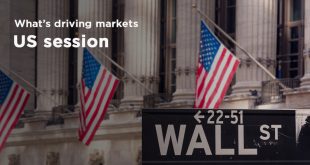In a buoyant sign for the US economy, businesses stepped up their hiring last month as Omicron faded and more Americans ventured out to spend at restaurants, shops and hotels despite surging inflation.
Employers added a robust 678,000 jobs in February, the largest monthly total since July, the Labor Department reported Friday. The unemployment rate dropped to 3.8%, from 4% in January, extending a sharp decline in joblessness to its lowest level since before the pandemic erupted two years ago.
Friday’s hiring figures were collected before Russia’s invasion of Ukraine, which has sent oil prices jumping and has heightened risks and uncertainties for economies in Europe and the rest of the world.
February hiring data suggest that two years after COVID-19 sparked a nationwide shutdown and 22 million job losses, the disease is losing its grip on America’s economy. More people are taking jobs or searching for work, a trend that, if it endures, will help ease the labor shortages that have bedeviled employers for the past year.
In addition, fewer people are now working remotely because of the disease. A continuing flow of people back to offices could boost employment in urban downtowns. And the number of Americans who are delaying job hunts for fear of the disease fell sharply from January, when omicron was raging, to February.
All signs are that the pandemic is easing its hold on jobs and the economy. Very strong numbers in very uncertain times. Other recent economic data also show the economy maintaining strength as new COVID infections have plummeted.
Consumer spending has risen, spurred by higher wages and savings. Restaurant traffic has regained pre-pandemic levels, hotel reservations are up and far more Americans are flying than at the height of omicron.
Escalating costs for gasoline, wheat and metals such as aluminum, which are exported by both Ukraine and Russia, will likely accelerate inflation in the coming months. Higher prices and anxieties surrounding the war could slow hiring and growth later this year, though economists expect the consequences to be more severe in Europe than in the United States.
Inflation has already reached its highest level since 1982, with price spikes especially high for such necessities as food, gasoline and rent. In response, the Federal Reserve is set to raise interest rates several times this year beginning later this month. Those increases will eventually mean higher borrowing rates for consumers and businesses, including for homes, autos and credit cards.
Chair Jerome Powell said this week he plans to propose that the Fed raise its benchmark short-term rate by a quarter-point when it meets in about two weeks. Powell has acknowledged that high inflation has proved more persistent and has spread more broadly than he and many economists had expected.
One figure in Friday’s report could provide reassurance for the Fed’s policymakers as they assess inflation pressures: Average hourly pay barely grew in February. Higher wages, while good for workers, often lead companies to raise prices to cover their higher labor costs and thereby further heighten inflation.
But that slowdown might not last if inflation worsens. Some staffing agencies are seeing a shift in what is driving higher pay. Previously, it was companies’ need to fill jobs. Now, some workers are saying they need raises to cover rising costs.
Michelle Reisdorf, a district director at recruiter Robert Half in Chicago, who fills permanent and temporary jobs in accounting, human resources and other professional jobs, said workers are starting to cite higher gas costs when seeking a raise, particularly if they drive to offices.
The strong hiring in February occurred across most of the economy, with restaurants, bars and hotels adding 79,000 jobs, construction 60,000 and transportation and warehousing 48,000. Though the economy still has 2.1 million fewer jobs than it did before the pandemic struck, the gap is closely fast.
Data from the restaurant reservation software provider OpenTable showed that seated diners surpassed pre-pandemic levels late last month. And figures from the Transportation Security Administration reflected a sharp increase in the number of people willing to take airplane flights.

 Noor Trends News, Technical Analysis, Educational Tools and Recommendations
Noor Trends News, Technical Analysis, Educational Tools and Recommendations




